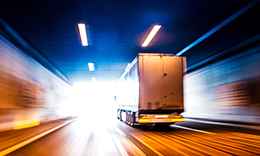
Written By: TMSA Staff | Sep 7, 2018 12:00:00 AM
By many indicators, the economy is strong – but where will it be in the months to come? And with consumer demand at high levels, how long will this last? And with capacity challenges, the ongoing driver shortage, and burdensome regulations, what is the overall outlook for providers of commercial freight services?
These are common questions currently being asked in the commercial transportation industry. A closer analysis at economic trends analysis provides some educated perspective.
Consumer Confidence: 2018 An Incredible Year
So far, the economy has been a banner year when you look at key indicators that tie directly to the health of the economy.
The U.S. economy gained a better-than-expected 201,000 new jobs in August, while the unemployment rate held steady at 3.9 percent, the Bureau of Labor Statistics reported. Economists had predicted 189,000 new jobs, and the report should further solidify the Federal Reserve's plans to raise interest rates amid what officials previously labeled a "strong" U.S. economy. Experts say job growth should continue into the second half of 2018, fueled partly by last year's tax cuts.
"The economy is on a sugar high from the fiscal stimulus, and that's going to continue through the rest of this year and into 2019," Ryan Sweet, director of real-time economics at Moody's Analytics, said in a recent interview. "Job growth is still running right around 200,000. That's more than enough to keep up with growth in the working-age population." Sweet predicted unemployment may dip below 3 percent by the end of 2018. Transportation is among the industries that added jobs in August.
Demand: Driving the Economy and Freight Capacity
Across the board, freight is at capacity. Shipper demand is stronger than carrier ability to meet it. This trend shows no signs of retreating near-term. Economic growth has created a bull market for all classes of freight. Retail sales are up 6% over 2017. E-commerce has actually increased⎯not redirected⎯the amount contract freight in the system. Industrial production is up as well. Inventories have risen steadily, but not out of line with sales. In fact, the inventory-to-sales index is trending lower, at 1.35. Leaner inventories indicate faster turnover, sustaining shipping demand.
What Providers and Their Shippers Can Do Right Now
Data suggests that the recent ELD mandate is affecting driver availability, particularly in the mid-range sector (451-800 miles). The Tender Rejection Index (TRI) indicates that drivers and carriers are being more selective of loads they accept. Mid-range sector rejections are running 27-34%, local rejections at 8.5%. Carriers, third-party logistics companies and their drivers are looking for loads that offer more driving time, less idle time. Higher rejection rates put pressure on rate structures. Shippers are being more mindful of these desires and doing what they can to make their freight (and their overall business) more desirable.
For shippers, faster load turnaround is key. One immediate step is to improve dockside efficiency to minimize idle time, ensure load acceptance and improve delivery response.
Growth in TMSA Member Companies Capabilities
Several TMSA member companies have announced recent developments and expansions in their capabilities, services and operations. Here are a few examples:
LeSaint Logistics, an Illinois-based company specializing in customized, integrated supply chain solutions, is continuing to grow its operations and increase its national network serving clients throughout the United States. With more than 200 clients nationwide, LeSaint has expanded its operations in four locations in four states in response to changing market dynamics where serving consumers with same-day order receipt, same-day ship is paramount.
FedEx continues to grow, and boasts some impressive statistics: 670 aircraft. 130 fully automated hubs. More than 425,000 team members. $65.5B annual revenue.
The Port of Long Beach received approval earlier this year on the Pier B On-Dock Rail Support Facility, greenlighting a project within the Harbor District that will move cargo faster, with fewer environmental impacts. The Pier B project would enhance train assembly and shift more cargo from trucks. > More
Interested in more?
Join TMSA and visit the Members Only Section for more valuable resources and whitepapers.
And check out the TMSA Blog for more related articles!
Tags: